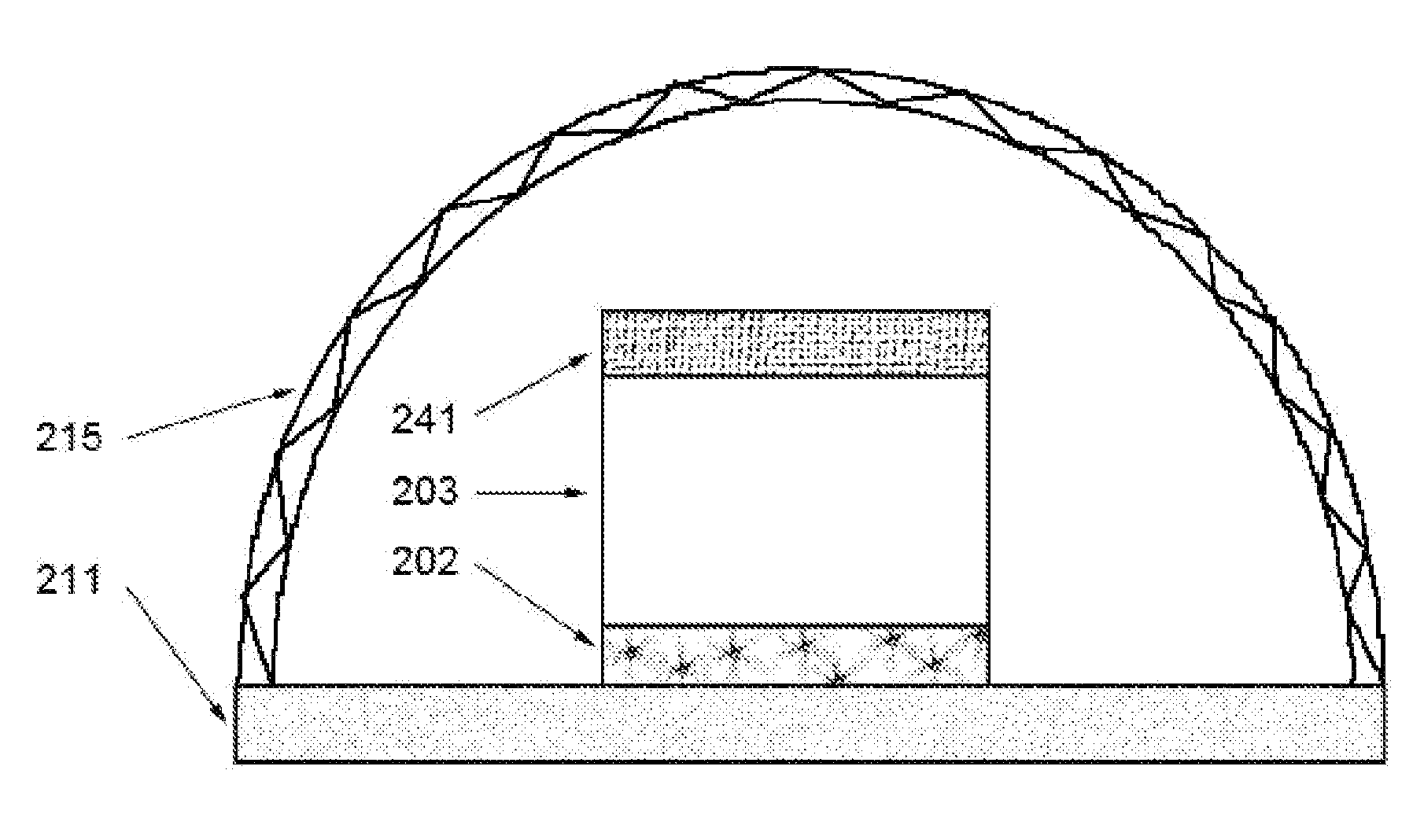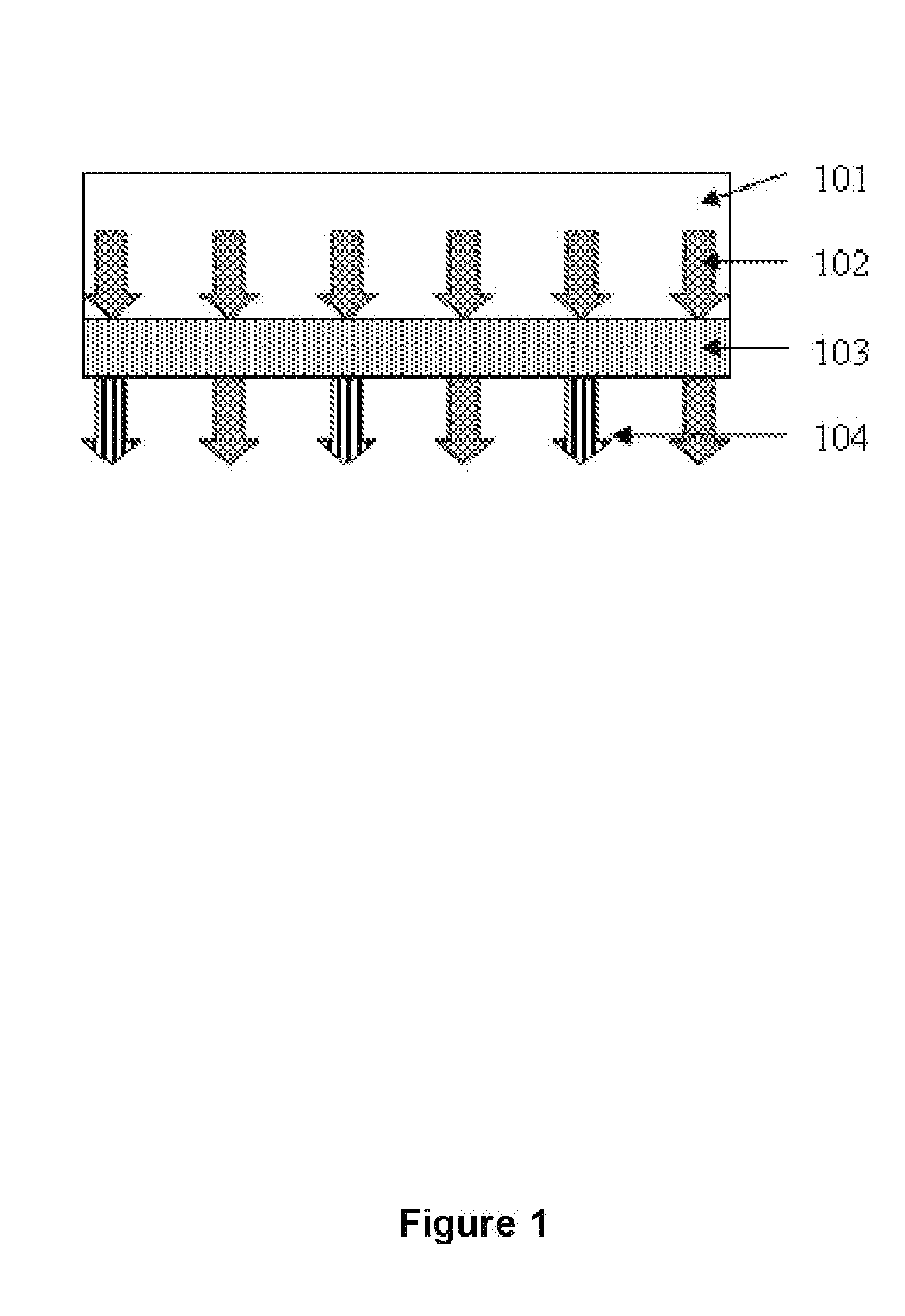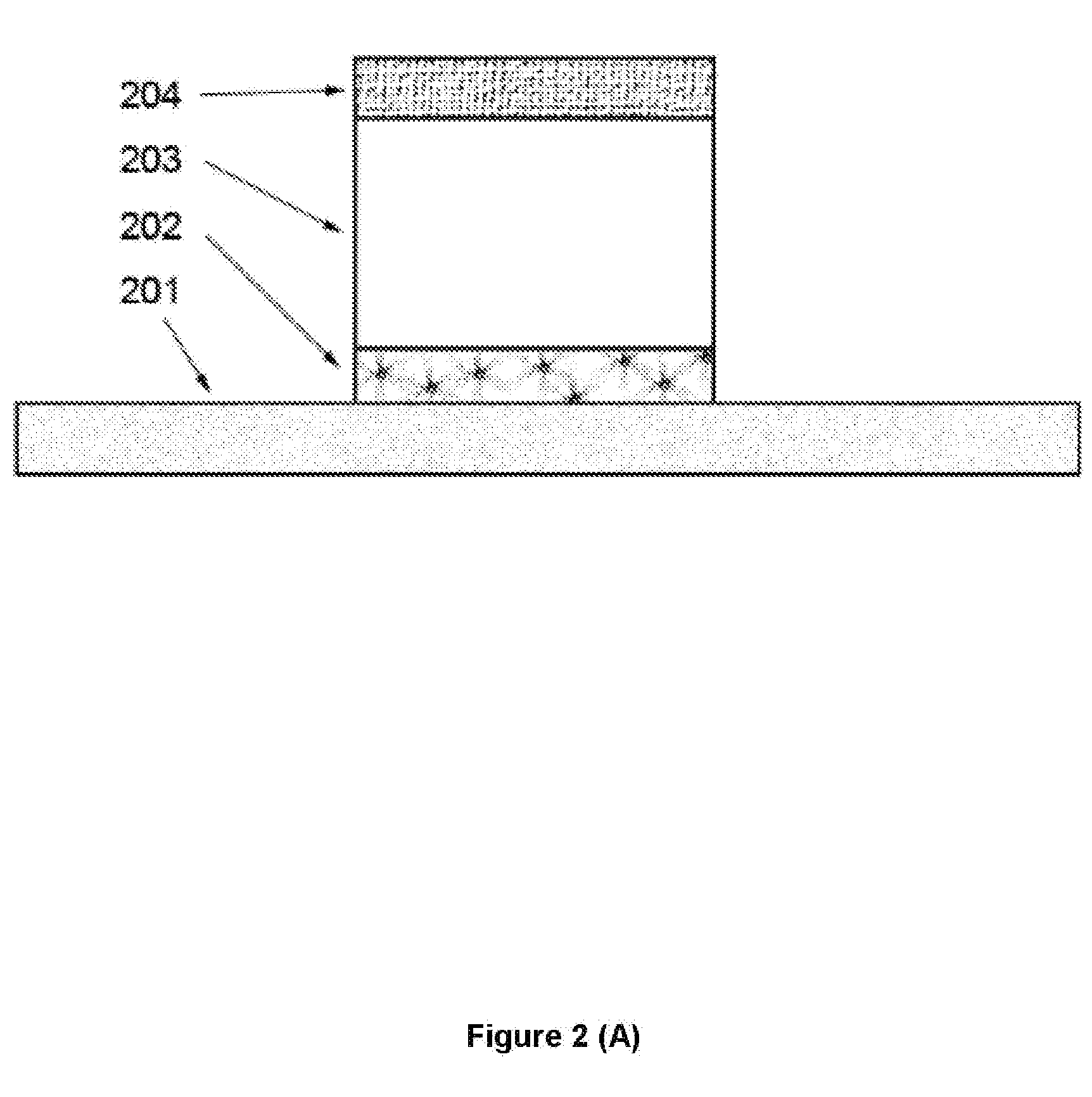Light Emitting Diode Light Source With Layered Phosphor Conversion Coating
- Summary
- Abstract
- Description
- Claims
- Application Information
AI Technical Summary
Benefits of technology
Problems solved by technology
Method used
Image
Examples
Embodiment Construction
[0016]FIGS. 2A-2D show phosphor conversion LEDs that include a substrate 201 (or 211, or 221, or 231), a layer of solder 202 (or 212, or 222, or 232), an LED chip (junction) 203 (or 213, or 223, or 233), a phosphor conversion coating 204 (or 214, or 224, or 234), and / or an optical lens 215 (or 225, or 235). The LED junction 203 (or 213, or 223, or 233) can be a single LED chip (junction) or an array of LED chips. The layer of solder is used to connect LED chip(s) to the substrate 202 (or 212, or 222, or 232). The substrate should be an electrical insulator. The phosphor conversion coating 204 can be placed directly on the top of LED chip 201, as shown in FIG. 2A and FIG. 2B, or placed on the inner surface of the optical lens 225 (or 235), as shown in FIG. 2C and FIG. 2D. The optical lens 225 (or 235) is used for better light distribution emitted from the system.
[0017]The phosphor conversion coating 204 (or 214, or 224, or 234) can be formed by depositing phosphor materials directly ...
PUM
 Login to View More
Login to View More Abstract
Description
Claims
Application Information
 Login to View More
Login to View More - R&D
- Intellectual Property
- Life Sciences
- Materials
- Tech Scout
- Unparalleled Data Quality
- Higher Quality Content
- 60% Fewer Hallucinations
Browse by: Latest US Patents, China's latest patents, Technical Efficacy Thesaurus, Application Domain, Technology Topic, Popular Technical Reports.
© 2025 PatSnap. All rights reserved.Legal|Privacy policy|Modern Slavery Act Transparency Statement|Sitemap|About US| Contact US: help@patsnap.com



